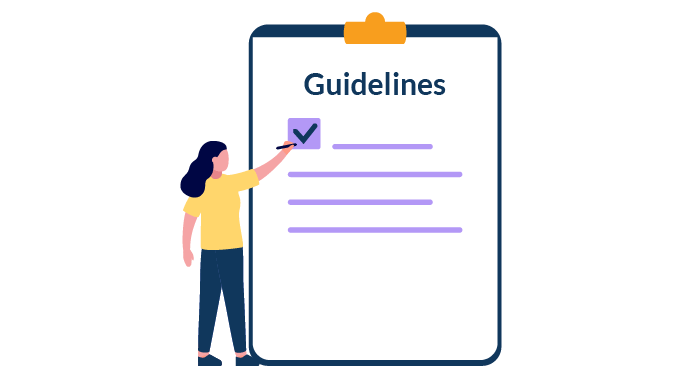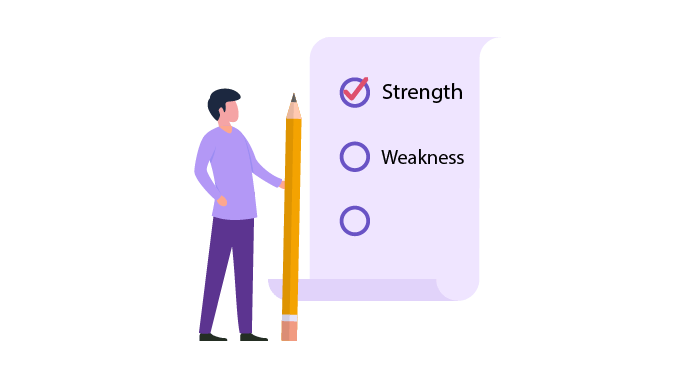What is 360 Degree Feedback? Benefits, Best Practices, Alternatives
360-degree feedback has proven to be a potent development tool for performance management.
What is 360 Degree Feedback?
The 360-degree feedback also referred to as multi-rater feedback, provides an employee with a performance evaluation from the people who work alongside them.
In simpler terms, employees receive feedback from diverse raters. The raters range from managers, peers, juniors, to even clients.
360 Evaluations In A Performance Development Plan

More and more managers within companies are opting for the 360-degree feedback.
Why? Because it's useful. A 360 feedback report offers data that highlights employees' strengths and weaknesses.
Effective implementation of the 360-degree feedback has shown a direct impact on companies. It is true not only for teams but also in the work culture's rising productivity levels.
4 Major Benefits Of The 360 Degree Feedback System
The truth is that feedback is the future. More than 85% of all the Fortune 500 companies use the 360-degree feedback process for their overall leadership development plan.
A 360-degree feedback survey offers leaders an incredible opportunity. It allows them to give accurate and helpful feedback confidentially.
In turn, the person receiving feedback gets valuable insights into their performance.
In many ways, 360 evaluations are much more useful than performance appraisal. Performance appraisal is more about monetary benefits. Whereas, 360 evaluations seeks to improve performance metrics.
With effective implementation, these are the following benefits of 360-degree feedback.
1: Improves Self-Awareness When Compared To Performance Review

Being self-aware is to be aware of one's strengths and weaknesses. But most often, we need a push in the right direction.
360 reviews empower deeper understanding when an employee compares their peer assessment with their own regarded evaluation of their work. 360-degree evaluations provide a balanced evaluation. It highlights their strengths, weaknesses, and improvement areas.
The peer direct report helps workers analyze their performance and take suitable steps. Thus, employees get real-time insights into their actual potential.
2: Balanced View From Team Members

360-degree feedback is highly beneficial to the employee. The peer direct report helps give a well-rounded view of their work performance.
In this model, feedback isn't collected only from the employee's manager. It is also gathered from other managers, peers, and clients. Thus, it guarantees a fair and accurate picture of the employee's work ethics.
Listen to our podcast on: Significance of Feedback & Recognition in a modern diverse workplace with Sarabjeet Singh Gill
3: Identifies Personal Development Opportunities

An integral part of performance management is creating regular development plans.
360-degree feedback highlights the essentials of team dynamics. Who are the team players? Which members go above and beyond? Who has leadership potential?
Such feedback results are crucial in team building. Teams develop better working relationships and improve team performance.
Similarly, the 360 feedback process gives employees ownership over their improvements.
It encourages individual accountability and control over one’s career path. Taking the central role in their development plan increases the engagement of employees.
A continuous 360 evaluations help employees to understand their problem areas. That creates a culture of taking responsibility and accountability. The employee can perform according to the areas which need further improvement.
That makes it easier to convey constructive feedback. And if the employee fails to perform, he will be responsible for his poor performance.
4: Receiving Feedback Facilitates Communication

Communication is the initial step to move from evaluation to improvement.
A self-aware attitude matched with feedback creates an opportunity for communication. It generally begins with a talk between the reviewer and the employee surveyed.
The reviewer gets to understand the employees’ side of the story. The employee gets a safe space to share his ideas and troubles. Such one-on-one conversations help aid:
- A better working relationship.
- Address important issues.
- Two-sided communication process.
- Builds trust and loyalty.
- Set individual and organizational goals.
(Learn More: Reverse Mentoring- Definition and How to Implement)
Best Practices for Implementing 360 Degree Feedback
Best practices for implementing a 360-degree feedback process effectively include:
Rater Selection
Choosing the raters should be specific. The prayers should interact regularly and have first hand knowledge of the individual being evaluated. This can include supervisors, peers, subordinates, and even external stakeholders like clients or customers.
Anonymity and Confidentiality

Anonymity is essential for any feedback process to encourage honest and open responses. Ensure that feedback responses are kept confidential and aggregated to maintain the privacy of individual raters.
Rater Training
Provide training to raters on how to provide constructive and specific feedback. Understanding the purpose of the feedback process is important. Objectivity is also important. Delivering feedback in a balanced and respectful manner is key.
Clear Guidelines and Instructions

Clearly communicate the purpose, expectations, and guidelines of the 360-degree feedback process to all participants. Provide instructions on how to complete the feedback forms, emphasize the importance of honest feedback, and specify deadlines for submission.
Feedback Culture
Foster a culture of regular feedback in the organization by encouraging regular feedback exchanges. Feedback is an important tool for personal growth. It is essential to create a safe and non-judgmental environment when giving and receiving feedback. This encourages open communication and can help individuals progress.
Balanced Feedback

Encourage raters to provide balanced feedback by highlighting both strengths and areas for improvement. This ensures a comprehensive evaluation that acknowledges accomplishments while identifying areas that need development.
Follow-up and Development Planning
Encourage individuals to have follow-up discussions after receiving feedback. This can involve conversations with supervisors or coaches to discuss feedback results, identify development areas, and create personalized development plans.
Actionable and Specific Feedback

Encourage raters to provide feedback that is specific, clear, and actionable. Vague or general feedback can be challenging to act upon, so encourage raters to provide specific examples and suggestions for improvement.
Continuous Improvement
Regularly review and refine the 360-degree feedback process based on feedback from participants and organizational needs. Incorporate learnings from each feedback cycle to enhance the effectiveness and relevance of the process.
Support and Resources

Offer resources, support, and guidance to individuals receiving feedback. This can include coaching, training programs, or access to resources that help them address areas for improvement and enhance their skills.
Organizations can ensure success and impact through 360-degree feedback processes. These processes contribute to personal and professional growth. This can be achieved by implementing best practices.
Why 360 Degree Feedback Processes Are Being Ineffective

Now here comes the ugly part.
With efficient implementation, 360-degree feedback processes can have a vital impact. Not only on employee engagement but also in professional development.
But, sometimes leaders start expecting way more from them. It is one of the main reasons why the 360 feedback process fails. Some other causes are:
Disinterested bosses

Programs that do not get due attention from bosses are ineffective. The leader needs to be invested completely. Only then, other workers will take it seriously.
Lack of Trust and Psychological Safety
Lack of trust and psychological safety can significantly impact the effectiveness of 360-degree feedback.
Lack of trust can make individuals afraid to provide honest and constructive feedback. They worry about the negative consequences or repercussions. They may worry about damaging relationships or facing retaliation thus hampering growth and development through feedback programs.
No follow-ups

Change doesn't happen overnight. It takes time. The process doesn't end after forwarding the feedback to an employee. A significant change requires time, attention, and reminders.
Rater Bias
Rater bias can affect the objectivity and validity of the feedback, potentially undermining the effectiveness of the feedback process.
Employees tend to be influenced by their own subjective perceptions, preferences, or prejudices when evaluating someone's performance.
Personal biases, relationships, or stereotypes. can make assessments of individuals in the review process inaccurate or unfair.
No strengths. Only weaknesses

Some companies only focus on the negatives. Additionally, they disregard the positives that discovered in the feedback process. Always give the positives are aspects more significant in the case of a feedback system.
But what most leaders fail to recognize is that these mistakes are preventable.
However, with proper measures, the advantages of a 360 evaluation far outweigh its disadvantages.
Consider Alternative Feedback Methods
While 360-degree feedback is a valuable tool, there are alternative feedback methods that can complement or supplement its effectiveness. Here are a few examples:
Regular One-on-One Meetings

One-on-one meetings between managers and employees provide a consistent forum for open dialogue, feedback, and coaching. These meetings allow for more personalized and timely feedback, addressing specific performance issues, and setting goals collaboratively. One-on-one meetings work well for ongoing performance management and building strong relationships.
These insights also help with leadership development programs, as it gives managers a better understanding of how their team members work.
Performance Coaching

Performance coaching involves a dedicated coach working closely with an individual to enhance their skills, performance, and personal development.
Coaches provide targeted feedback, guidance, and support tailored to the individual's unique needs and goals. Performance coaching can be especially effective for high-potential employees or those seeking focused development in specific areas.
Peer Feedback

Peer feedback involves the exchange of feedback between colleagues at the same level or within the same team. It promotes collaboration, sharing of best practices, and recognition of peers' strengths and contributions. Peer feedback can be used to supplement 360-degree feedback by providing additional insights from those who work closely together.
Continuous Feedback

Feedback is a process that happens continuously. It is provided in real-time or at regular intervals, not just periodically. It encourages immediate course correction, fosters a culture of continuous improvement, and enables timely recognition. Continuous feedback can be facilitated through various channels, such as feedback apps, chat platforms, or regular check-ins.
Organizations can select a combination of feedback methods tailored to their unique needs, organizational culture, and resources. This will help form a comprehensive feedback ecosystem. This ecosystem will support continuous growth and development.
Traditional Performance Feedback v/s 360 Degree Feedback

Before, only managers used to give feedback about or to an employee. As a result, the evaluation of an employees' performance was rather one-sided.
In traditional performance feedback, feedbacks get affected by the manager's personal judgment.
It has resulted in a drastic change in the quality of the feedback received. Many a time deserving employees never got appreciated for their efforts. Also, this gave a false input to management, which made decisions based on the feedback.
Thus this started to affect the growth of the company.
But, in 360 reviews, every employee becomes a part of the performance appraisal system.
Also, 360-degree feedback helps in tracking an employee's development, thereby boosting employee performance. In a sense, 360 evaluations are more valid as it is from such a varied audience.
It became a primary reason why most companies opt for 360-degree feedback instead of the more traditional feedback system.


















